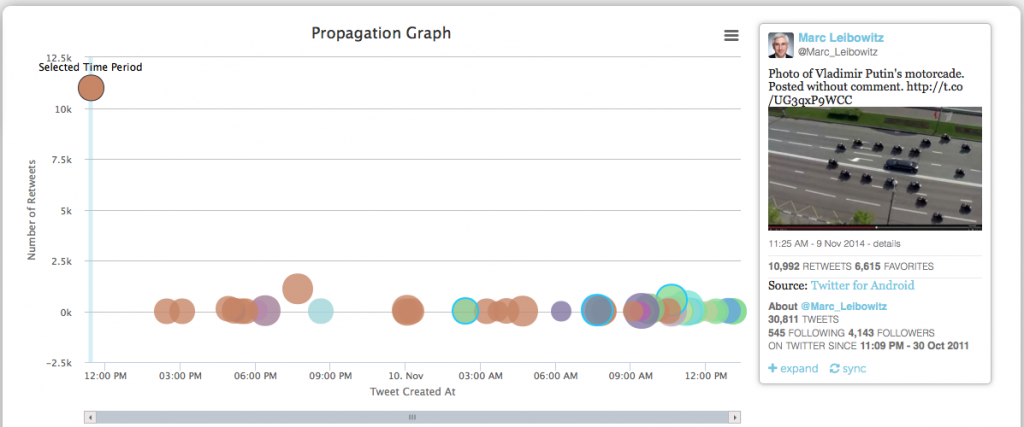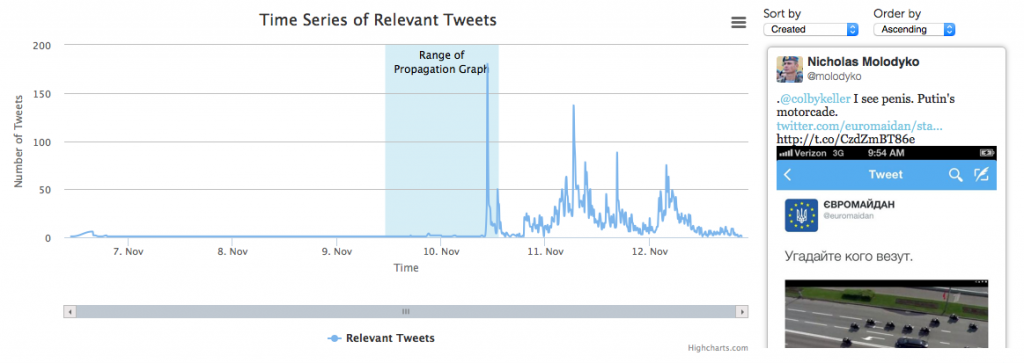Twittertrails is studying the propagation of rumors on Twitter. It will give you evidence about how the Twitter audience reacts to a rumor and whether the audience believes the rumor is a hoax or not. Its method of measuring the skepticism of the audience is a little more sophisticated than counting retweets, however. In fact, the rumor may get a huge head start, almost 11,000 retweets, but if they all came from the same source, they will not count as much on the skepticism level.
Let us demonstrate the skepticism level with an example. The twittertrails.com user asks the system to retrieve all tweets containing the terms “putin motorcade”, and the rest are computed automatically in a few minutes.
The “Putin Motorcade Shape” Story
A few days ago, a funny rumor appeared, that Putin’s motorcade was shaped as, well, you’ll see in the accompanying picture:
The originating tweet who broke the story received almost 11,000 retweets! One of the reasons for that amazing count that any marketer would love, was that the account owner is a member of several groups with different political, ethnic and financial identities. Looking into the timeline graph, however, one can see that he was not the first to write about it. The first relevant tweet came several days before his post, by an Ukranian Euromaidan account.
Google translates the Euromaidan text as “Guess who is being carried.” The originator, however, decided to guess and name names, (or got a hint from a … predisposed intermediary 😉 which excited several neighboring communities, as the Retweet graph shows:
Note that the different bursts of retweet are carried out by a small number of interconnecting followers. They are important for spreading rumors across communities. Marketers who want to see their advertisements reach a large audience should take notice.
The main actors, however, those who were retweeted by at least two members of the audience, were few, as shown in the co-retweeted network:
The top two blue nodes correspond to BuzzFeed accounts who were pointing to news reports from the British Telegraph and the Independent. Journalists and others had done their homework and were pointing out that the image is photoshoped. While the number of retweets of the negating sources never reached the number of the rumor retweets, they had an h-index large enough for twittertrails to conclude that the story was dubious:
There are many more details that our analysis reveals, feel free to explore the Putin’s motorcade shape story on Twittertrails. There is nothing magic here, it is crowd sourcing at work. When a large number of people become aware that a rumor they think false is propagating, many will react in two ways: (a) they may do a search and raise doubt for others to see, or (b) they may decide that it is not worth propagating. Both actions will hurt the rumor propagation. They might even decide that their informant was not very trustworthy.
Have we ever seen a false rumor propagate without much negation? We have, but very rarely. See a followup post on that soon!
Do you have rumors you would like us to investigate? Drop us a line.




